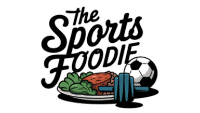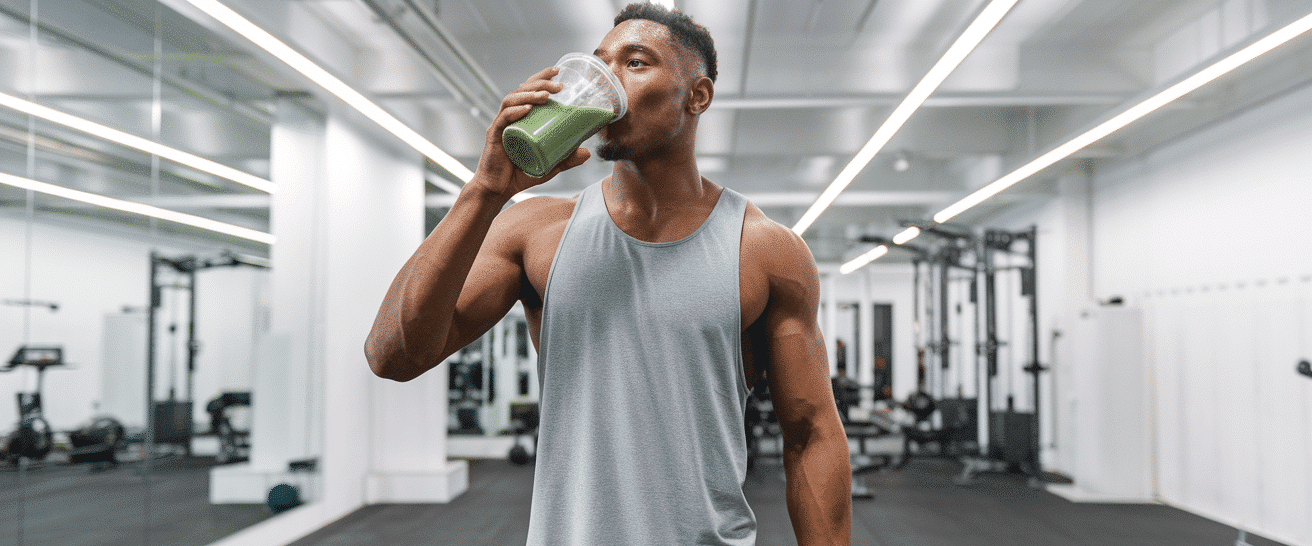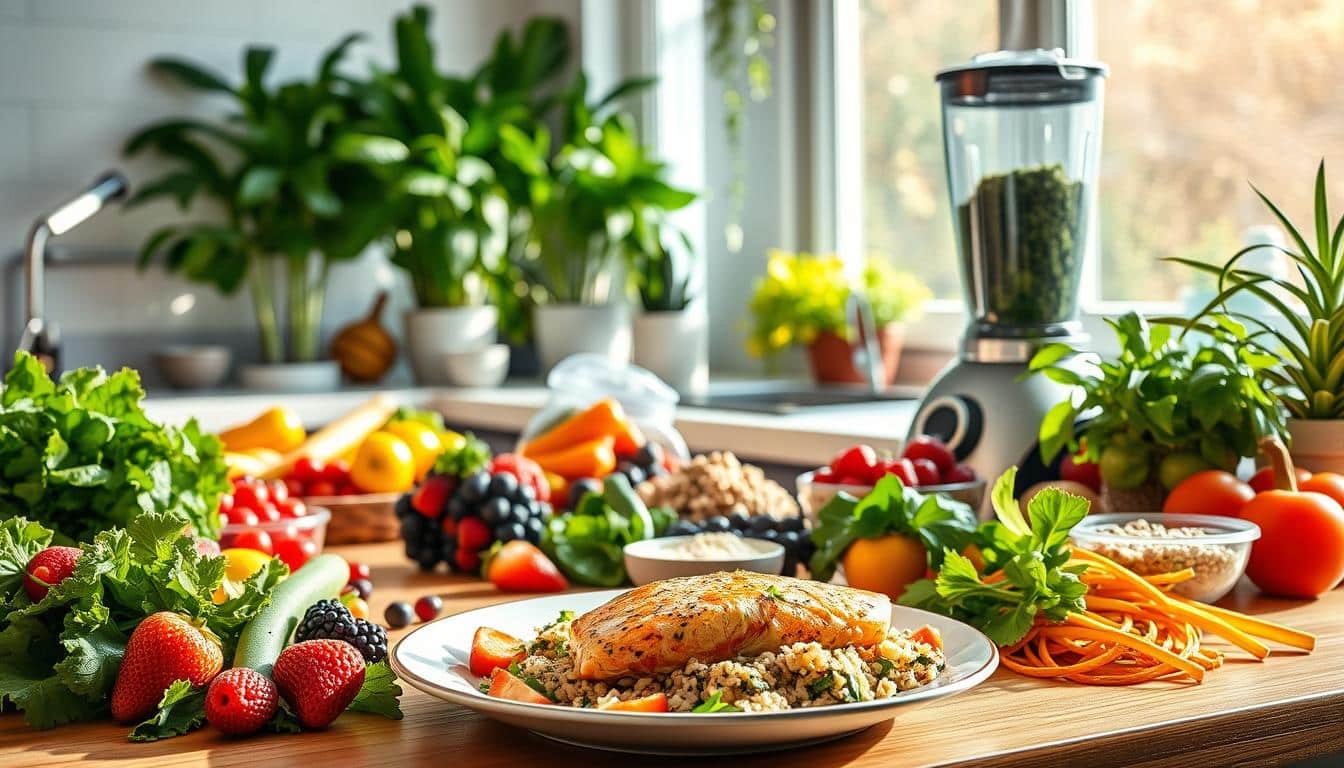Surprising fact: swimmers who miss just 200 calories a day can cut training output by over 10% in high-volume weeks. That drop shows how tight the link is between fuel and results.
I’ve seen athletes fix poor sessions with one change: smarter meal timing. Good nutrition keeps your energy steady, speeds recovery, and lets you hit hard sets again.
This intro will show clear, usable rules. You’ll learn why carbs power quick efforts, why protein repairs muscle, and why fats keep calories steady.
We’ll cover how a simple pre-morning meal, proper water steps, and snack swaps cut GI trouble before races. You’ll get easy food ideas to pack at the pool and a checklist to try today.
Want deeper science on how food affects training and performance? See this concise guide: how nutrition affects athletic performance.
Understand Energy Needs for Swim Training
Calorie needs shift with yardage, age, and session intensity. High-volume weeks demand more fuel. Short, fast sessions demand quick carbohydrate stores. Long sessions need steady sources of energy.
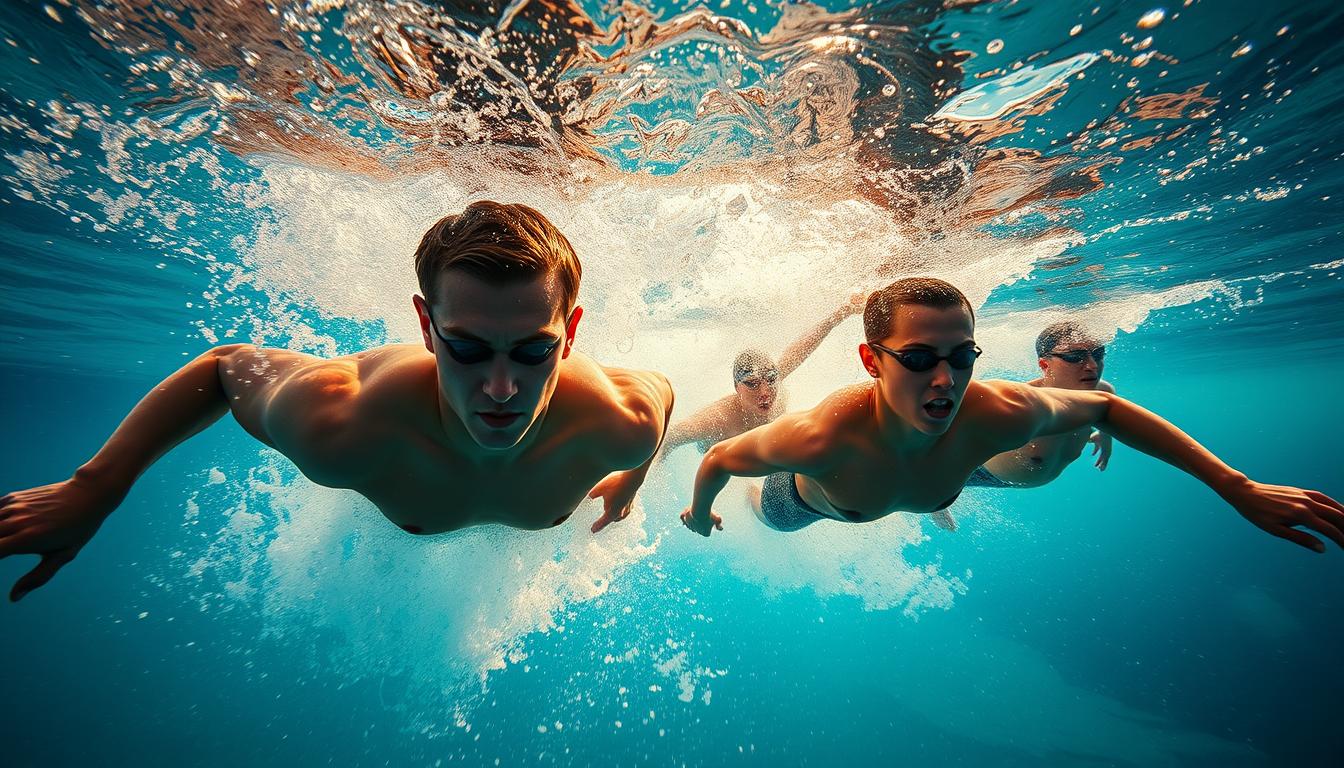
- Carbohydrates power fast sets and high-intensity work during training hours.
- Protein repairs and builds muscle after each session.
- Fats provide a steady energy source to reach daily calorie targets without stomach overload.
Calories by age and yardage
A 15-year-old male sprinter doing ~5,000 yards may need 3,500–4,500 calories per day. A distance swimmer at ~9,000 yards may need 5,000–6,000 calories. A 17-year-old female on those workloads may need roughly 2,750–3,750 or 4,000–5,000 calories.
Adjust up on double-practice days. Your body needs more total energy when volume or intensity rises. Track how you feel in the water and tweak portions. If energy dips mid-set, add carbs before and during the next session.
Hydration Strategy Before, During, and After the Pool
Plan your fluids like you plan your sets — on purpose and on a schedule. Thirst lags, so start early to protect energy and performance.
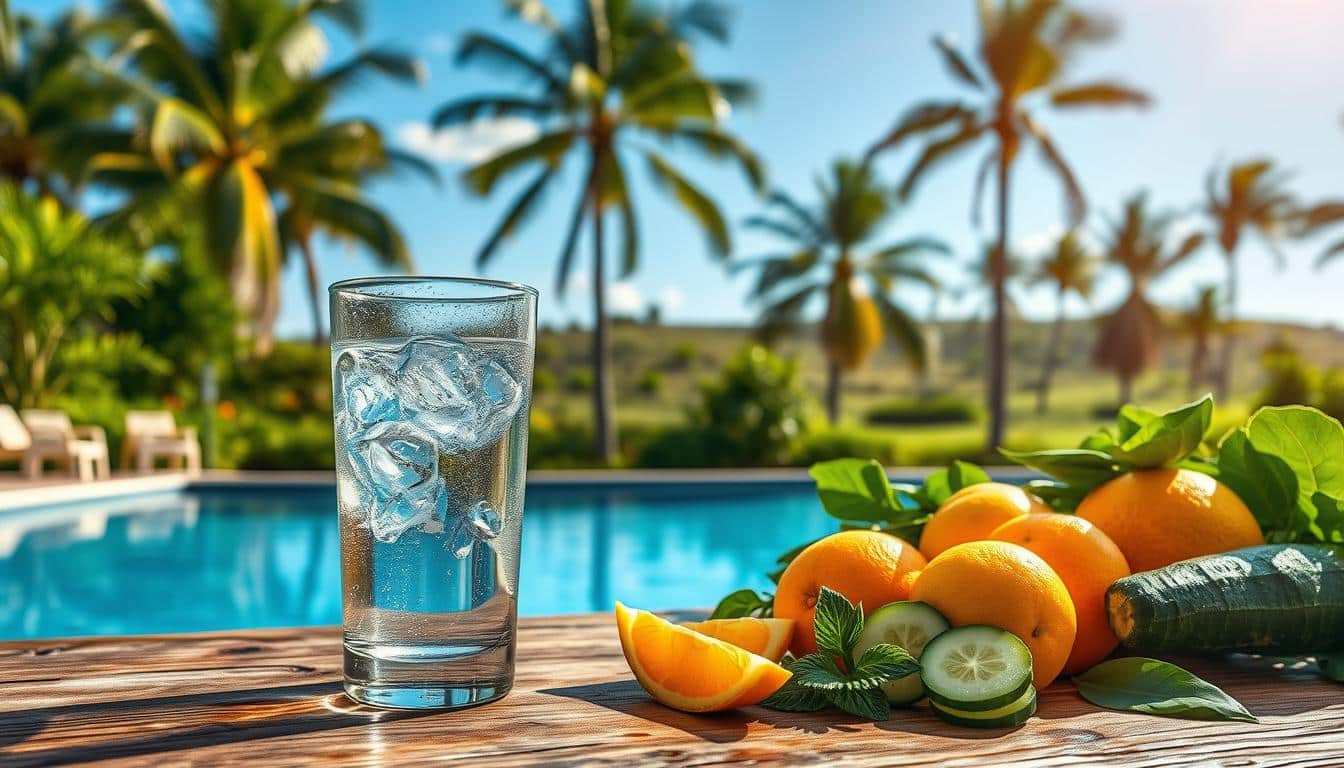
Before — Drink 14-20 oz about two hours before you swim. Take another 8-16 oz about 15–20 minutes before you start.
During — Sip 6-12 oz every 20 minutes while training. Use plain water for sessions under 60 minutes.
For longer or hotter sessions, use a 6–8% carbohydrate sports drink to keep energy steady and replace electrolytes.
Rehydration and checks
Weigh in and weigh out. Replace 16–24 oz per pound of weight lost after practice. Aim for pale yellow urine all day.
- Add sodium via a sports drink or salted snacks to help fluid retention.
- Use a water sports drink mix during long meets to stabilize energy.
- Set timer alerts every 20 minutes so you hit drink targets during sessions.
| Timing | Volume | Drink Type | Purpose |
|---|---|---|---|
| 2 hours pre | 14–20 oz | Water | Top off hydration, steady energy |
| 15–20 minutes pre | 8–16 oz | Water | Prevent early thirst |
| Every 20 minutes | 6–12 oz | Water (short) / Sports drink (long) | Maintain performance during sets |
| Post session | 16–24 oz per lb lost | Sports drink or water + sodium | Rehydrate and replace electrolytes |
Pre-Workout Fuel: What to Eat Minutes to Hours Before Swimming
What you eat in the two to four hours before practice shapes how you feel in the pool. Fueling right keeps energy steady and limits stomach issues.
Full meal 3–4 hours before
Eat a full meal 3–4 hours before you swim. Start with starchy carbs, add a small portion of lean protein, and keep fat low.
- Build the plate with rice, pasta, potatoes, or bread.
- Add chicken, turkey, eggs, or yogurt for protein.
- Include a simple fruit like a banana if you need extra carbs.
- Drink water with the meal to begin hydrated.
Top-off 45–60 minutes before
Have a light snack 45–60 minutes before warm-up. Pick quick carbs that digest fast.
- Half a bagel, toast with honey, or a banana
- Low-fiber cereal or a sports gel if time is tight
- Keep portions small so you feel light in the first set
Foods to avoid
Avoid fried, creamy, or spicy items before practice. Skip high-fat meats and new foods on race day.
Test your plan in training. If it works, stick with it on meet day.
| Timing | What to eat | Why |
|---|---|---|
| 3–4 hours | Rice/pasta + lean protein | Steady energy, muscle support |
| 45–60 minutes | Half bagel, banana, toast | Quick carbs, low stomach load |
| On waking (early practice) | Toast, honey, small fruit | Fast fuel with low discomfort |
Want simple, tested options? Check these healthy snack ideas to plan your pre-swim routine.
Fuel During Training and Swim Meets
If a session runs an hour or more, on-the-go fuel saves your energy for the final laps.
Target intake: Consume 30–60 g of carbohydrate per hour during long training or meet hours. Add 5–10 g of protein per hour to aid recovery without upsetting the stomach.
Quick rules to follow
- Aim for 30–60 g carbs per hour on sets that run an hour or longer.
- Add 5–10 g protein per hour to support muscle repair.
- Sip 6–12 oz every 20 minutes to pair fluids with carbs.
- Break intake into small bites every 10–15 minutes to keep energy steady.
Practical options
Use fruit, granola bars, gels, or chews to hit your hourly carbohydrate target. If chewing is hard between intervals, choose a sports drink to deliver carbs and electrolytes.
| What | Amount per hour | Why |
|---|---|---|
| Carbohydrates (g) | 30–60 g | Maintain steady energy |
| Protein (g) | 5–10 g | Support recovery |
| Fluid | 6–12 oz every 20 minutes | Replace sweat and aid digestion |
Rotate snacks like bagel bites, crackers, or a soft granola bar to prevent taste fatigue. Log what you eat during training so meet fueling feels automatic on race day.
Post-Swim Recovery Made Simple
Targets first: Start a 3:1 carbs-to-protein snack within 30–45 minutes. Then eat a meal within two hours with 20–40 g of protein and quality carbohydrates.
Quick rules to follow
- Within 30–45 minutes: eat a 3:1 carbs-to-protein snack to speed recovery and top up glycogen.
- Within two hours: aim for 20–40 g protein with rice, pasta, potatoes, or whole-grain bread to repair muscle.
- Drink water with the snack to help move carbs into muscle and restore fluids.
Snack ideas that work
Choose easy, familiar options you can eat poolside. Chocolate milk, a fruit smoothie, or a PB&J are fast picks.
Other choices: a bagel with yogurt, salted pretzels, low-fat cheese and crackers, or a high-carb bar. If your appetite is low, start with a liquid snack and eat a meal later.
| When | What | Why |
|---|---|---|
| 30–45 minutes | 3:1 carbs:protein snack | Speed recovery, reduce muscle soreness |
| Within 2 hours | 20–40 g protein + quality carbs | Support muscle repair and refill energy |
| All day | Rotate snacks and plan meals | Keep intake consistent on training days |
Pack recovery food in your swim bag. Rotate snacks so taste stays fresh. Track soreness and add carbs after your hardest days to help muscle repair and performance.
The Best Diet for Swimmers: Daily Meal Structure
Make your daily plate a performance tool: simple patterns beat complicated meals when you train hard.
Breakfast options to kick-start energy
Start with oats, toast with peanut butter, or a smoothie with yogurt and fruit. If practice is early, keep breakfast light and add a second, fuller breakfast after the session.
Lunch and dinner templates
Build main meals around rice, pasta, or potatoes plus lean protein and vegetables. Add healthy fats like avocado, nuts, or a drizzle of olive oil to meet calorie needs on heavy days.
Snack ideas to bridge training
Use snacks to avoid afternoon energy dips. Pack cheese sticks, yogurt, granola bars, fruit, or a PB sandwich. Rotate simple options so taste stays fresh.
- Match plate size to training: larger on hard sessions, smaller on recovery days.
- Batch cook carbs: cooked rice or pasta saves time on weeknights.
- Balance each meal: half carbs, a quarter protein, a quarter vegetables.
| When | What | Why |
|---|---|---|
| Breakfast | Oats / Toast / Smoothie | Quick energy to start training |
| Lunch / Dinner | Rice / Potatoes + Protein + Veg | Refuel and repair the body |
| Between | Fruit / Cheese / Yogurt / Bars | Maintain steady energy and prevent hunger |
Test portions and listen to your body. Small tweaks to this structure will keep your nutrition practical, budget-friendly, and tuned to training.
Foods to Choose and Foods to Limit
Pick foods that fuel steady training and cut the chance of a mid-practice slump.
Choose
- Choose whole grains and starchy vegetables like bread, rice, pasta, and potatoes to supply carbohydrates and steady energy.
- Choose fruit and carb-rich snacks that digest quickly during long sessions.
- Choose lean protein such as chicken, fish, eggs, beans, tofu, and low-fat dairy to aid recovery.
- Choose healthy fats from avocado, nuts, and olive oil to round out calories without heavy stomach load.
Limit
- Limit heavy, fatty meals before a swim to prevent stomach upset during sets.
- Limit fried, spicy foods and high-sugar soda that cause GI trouble or energy crashes.
- Limit highly processed snacks; they often spike then drop energy and hurt performance.
| Category | Good options | What to avoid | Why |
|---|---|---|---|
| Carbs | Whole grains, rice, potatoes | Sugary sodas, candy | Steady energy vs. quick crash |
| Protein | Chicken, eggs, beans | Greasy large portions | Repair muscle without GI load |
| Fats | Avocado, nuts, olive oil | Deep-fried foods | Calorie-dense, easier on digestion |
| Practical tips | Test options in practice; pack simple snacks | New foods on race day | Protect performance and comfort |
Quick note: Drink water regularly and add electrolytes if you sweat a lot. Use water sports practice days as cues to pack steady, simple food choices and review your diet weekly to swap one lower-quality item for a better one.
Simple Budget Tips for a Swim Nutrition Plan
Small swaps at the store can cut food costs without cutting calories or energy.
Buy staples in bulk. Grab rice, pasta, oats, and potatoes in larger bags. That lowers cost per meal and saves shopping trips.
Pick frozen fruit and veggies. They cost less and last longer. Zero waste. Same nutrition as fresh.
- Choose store-brand Greek yogurt, beans, and cheese to stretch your budget.
- Batch-cook chicken, turkey, or tofu once. Use it across 3–4 meal builds.
- Prep snack packs with granola, granola bars, nuts, and pretzels on one day.
- Make sure you carry a water bottle and a shaker to avoid pricey drinks.
- Make sure your pantry holds shelf-stable carbs for last-minute meals.
- Use a simple rotation of two breakfast and two dinner options each day.
| Tip | Why it works | Quick example |
|---|---|---|
| Buy bulk staples | Lower cost per serving | Rice or pasta for multiple meals |
| Frozen produce | Stable price, no spoilage | Bagged spinach, berries for smoothies |
| Batch cook proteins | Saves time and reduces waste | Roast chicken for meals and snacks |
Conclusion
A clear Hydration‑Fueling‑Recovery routine makes training days easier and results clearer.
Start each swim ready: plan hydration and a small pre-session fuel so you feel sharp in the pool. Sip water early, top off before warm‑up, and carry a simple carb if practice runs long.
Hit carbohydrates during long sets to keep power steady. Recover within 30–45 minutes with a 3:1 carbs‑to‑protein snack, then eat a meal with 20–40 g protein to help muscle repair.
Keep the plan simple so you can follow it throughout day. Track a few numbers — ounces drunk, carbs per hour, and snack timing — and adjust on heavier training hours.
Commit today. Pack your go‑to snacks, batch cook staples, and check how your body feels in the next session.
